
This article was updated on October 31st, 2023
Did you know, itchy skin and skin disease is frequently reported as the number one most common reason for a dog to visit their vet? Certainly, in my clinic, we see itchy dogs with fur loss on a daily basis. Oftentimes, the same dogs will be seen regularly, as we try to manage their condition.
When itchy, a dog will lick, chew, nibble and scratch their skin. This damages the fur and causes it to thin and fall out. The skin will commonly be red and inflamed and secondary skin infections may be seen. This exacerbates the hair loss.
Hair loss in dogs related to allergies
When a dog has allergic skin disease, they have the constant urge to scratch, chew and lick as their skin is inflamed and irritated. This leads to trauma to the skin as well as bacterial and yeast infections. It also means that the fur becomes damaged and starts to fall out.
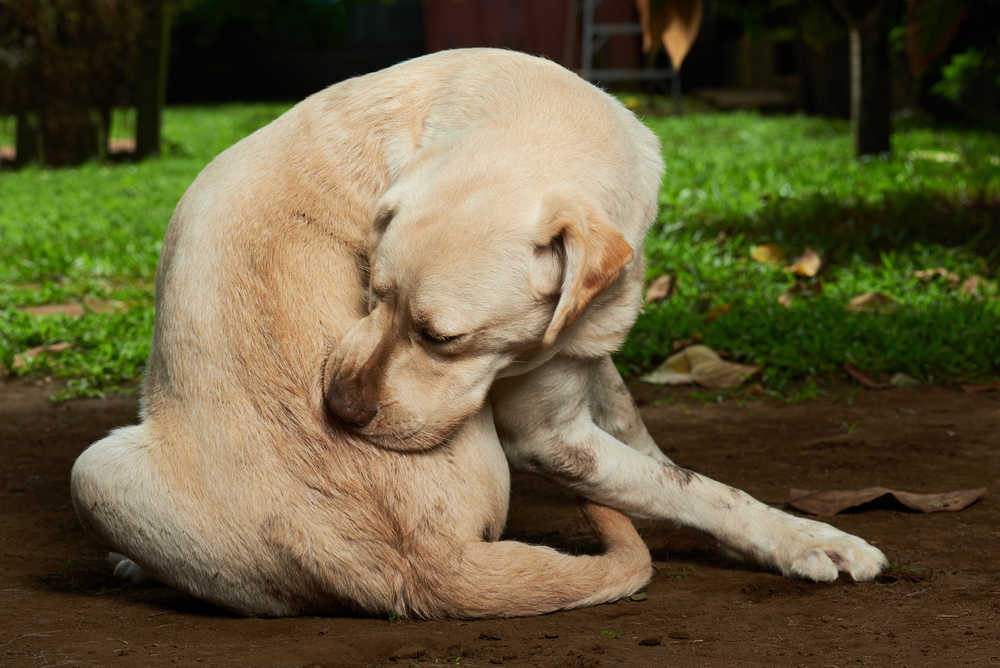
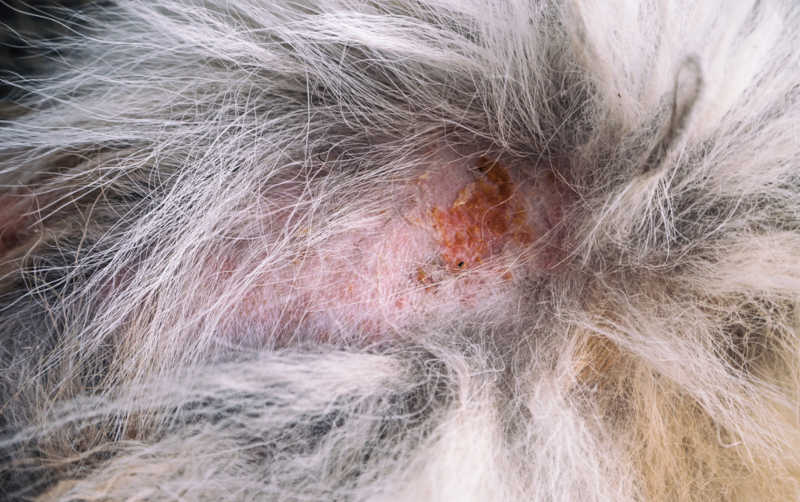

While it is normal for dogs to shed their fur, particularly in hot weather, we know there is a problem when they are losing so much fur that there is noticeable fur thinning and bald patches. In addition to baldness, we also often see pink or red skin, crusting and flakiness.
What to do when your dog is losing hair due to allergies
When it comes to managing allergies, we need to take a multi-modal approach. There is no one product that will be able to control signs effectively. For example, owners should minimize or eliminate their dog’s exposure to their allergen while working to create a healthy skin barrier through the use of skin supplements, appropriate bathing and probiotics. Many dogs will also need long-term anti itch and anti-inflammatory medication.
I recommend considering the following strategies in partnership with your vet:
1. Minimize or eliminate exposure to allergens. Owners should try and minimize or eliminate their dog’s exposure to their allergen as much as is feasible.
2. Check that your dog is up to date on flea prevention: If your dog is losing hair, it is a good idea to double check that your dog is up to date with an effective flea prevention and that all household pets have been treated. When we know our pet has a flea allergy, we should use flea prevention religiously, never missing a dose.
3. Consider skin supplements: Consider starting your pooch on some skin supplements containing ingredients like fish oil, Vitamin E and Biotin. These help to strengthen the skin barrier and to prevent allergens from entering broken skin. They also lock in moisture, relieving dryness and itchiness.
- Supporting Allergy Immunity for Dogs – Our allergy treats for dogs help relieve your furry friend's painful inflammation. These soft chews help reduce your pup's hotspots, dandruff, and shedding while supporting healthy skin and a shiny coat
4. Bathe your dog with a medicated wash or a puppy shampoo. This will likely help reduce allergens from the surface of their fur and skin and to wash off any excess yeast and bacteria. During a flare up, dogs will need more regular bathing than usual.
- RELIEF FOR ITCHY SKIN - Vet’s Best Allergy Itch Relief Dog Shampoo is a soothing, natural remedy for dogs with itchy skin due to allergies or sensitivity
5. Help your dog avoid self-trauma: Prevent excess self trauma by trimming their claws short and using things like buster collars and loose pet t-shirts where appropriate. It Is usually best not to put dog shoes on itchy paws, as this can lead to sweating and yeast overgrowth.
6. Consider a dietary trial (if not done already). This will help find out if your dog has a food allergy that has triggered your itching and fur loss. Ideally, you’d feed a hydrolyzed diet and nothing else for a period of eight weeks, to see if things improve.
7. Make sure you have a correct diagnosis. Diagnosing allergies is not always straightforward and can pose a challenge in some. Ideally, vets should rule out other causes of hair loss including endocrine disorders and mites. This can mean skin swabs, scrapes and blood tests. Allergy tests (blood tests or skin prick tests) are an option, but are not 100% reliable and can be costly.
For many dogs, symptomatic treatment is given, and owners are asked to keep a reaction diary and to check for patterns, to see what their dog could be reacting to.
8. Schedule a vet visit: When a dog is losing fur, it is time to see the vet. At this point, the dog will be causing excessive trauma to the skin and will usually be quite uncomfortable. Many dogs will have already developed secondary bacterial infections or fungal infections which will require treatment.
Important: With allergies, the sooner we treat them, the quicker they will clear up. When the dog is not promptly treated, their skin can become very damaged and this damage takes a long time to reverse.
Allergies resulting in hair loss
1. Flea allergies
When a dog is allergic to fleas and their saliva, we will see intense itching that is usually focused on their rump and flanks. Many dogs traumatise their own skin to the point they have bald patches and oozing lesions that are infected.
Flea allergy dermatitis is the most common skin issue in dogs in some parts of the world1. For practicing veterinarians, this statistic won’t be at all surprising. Flea allergy dermatitis tends to be seen most in the hotter months, but dogs can be affected any time of the year. In my experience, dogs who live with cats are at most risk of a flea infestation.
Dogs with flea allergic dermatitis are itchiest over their rumps and flank and these areas can become quickly bald, with bright red skin and oozing, scabby lesions. Fleas won’t always be seen as they are quickly groomed off by the dog.
Owners should treat all pets routinely for fleas using an effective product such as Selamectin (2) or Imidacloprid. Importantly, as over 90% of the flea burden lives off the dog and in the home, the house must be treated too.
For those with red or broken skin, a vet visit is advised. The vet can recommend anti-itch medicine to break the itchy scratch cycle as well as antibiotics and a medicated wash, if required. Learn more about flea allergy dermatitis (with pictures and info from our vet team).
Pictures of hair loss on dogs as a result of flea allergies:
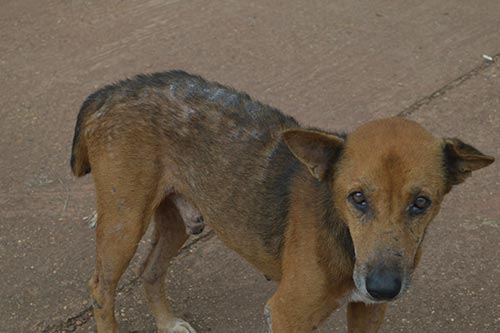
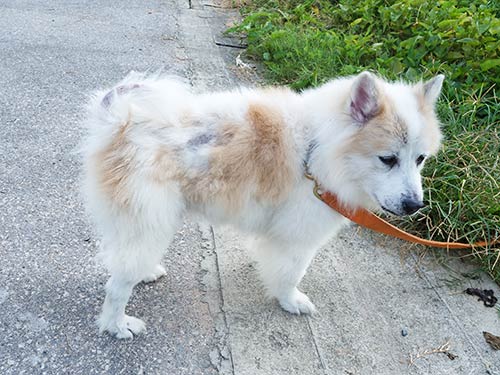
2. Allergies to pollen, grass and trees
Seasonal allergies are very frequently seen and many dogs will suffer with them to some extent. While they can cause symptoms including sneezing, coughing and a runny nose they more frequently cause skin inflammation and itchy skin. Signs will be lifelong.
When dogs have environmental allergies, certain parts of their body will be worse affected. This includes their face, ears, armpits, groin, belly and paws. Owners may notice excessive paw licking, face rubbing and generalized scratching.
For most owners whose dogs have environmental allergies, they will try hard to manage them during the Spring and Summer. This can include allergen avoidance, the use of air filters, wiping paws and belly after walks, skin supplements and the use of prescription medication to minimize itching and settle the skin.
Pictures of hair loss on dogs as a result of environmental allergies:
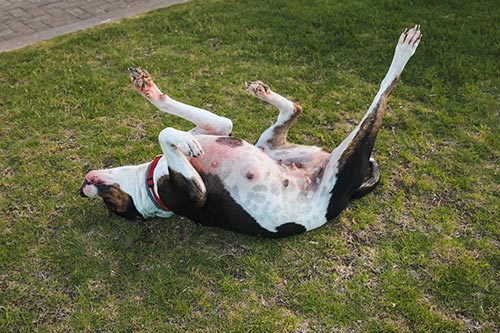
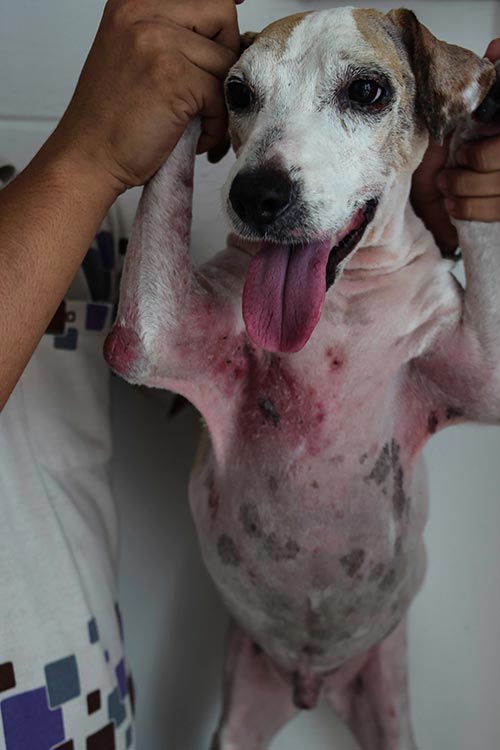
3. Allergies to dust mites
Another common environmental allergen is dust mites. Signs can be apparent all year round, though are often worse in Winter when we have the central heating on at home. Pets will itch the same places as those with other environmental allergies; mainly their face, tummy and paws.
As with other allergies, the frequent scratching and chewing leads to fur loss and infections, which can make the dog even itchier; it can become a vicious cycle. For this reason, addressing the itching early on with prescription medicine is a sensible idea. Many dogs with skin allergies are managed on low dose anti itch medicine all year round (or seasonally as needed).
From home, owners can try to minimize the number of dust mites by keeping the house as dust free as possible and using things like hypoallergenic bedding and air filters.
For some dogs, immunotherapy injections are an option for environmental allergies like a dust mite allergy. However, the treatment does not work for all and can be cost prohibitive.
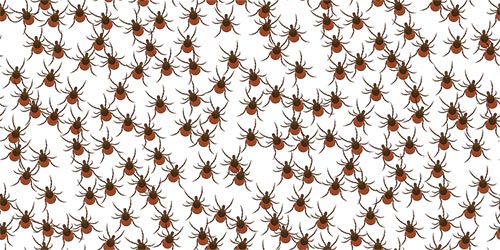
4. Food allergies
It is widely accepted that food allergies in dogs are over-diagnosed. Estimates suggest only about 1% of dogs have a true food allergy (3). Still, for these dogs, diagnosing the issue and avoiding the food is crucial. Many dogs with food allergies will also have environmental allergies.

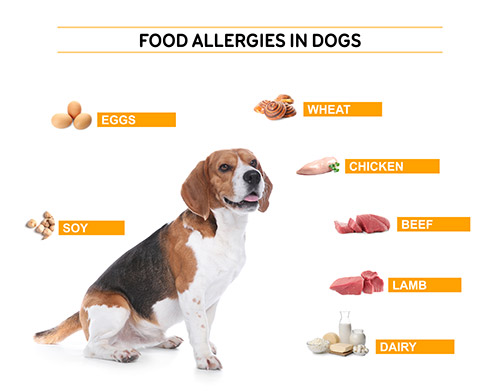
In addition to itchy skin and hair loss, owners may notice signs including:
- frequent stomach upsets,
- hives,
- bloating and weight loss.
- red skin around the anus or the mouth (local reactions to food particles).
Dogs also experience red skin and fur loss around the face, paws, tummy and groin.
The treatment is to avoid the allergen and this can mean feeding a restriction or hydrolyzed diet. It can take up to eight weeks to see if the diet has had the desired effect and dogs must not be fed anything else (like dental sticks or treats or scraps) at this time.
Hair loss and scabs as a result of food allergies:
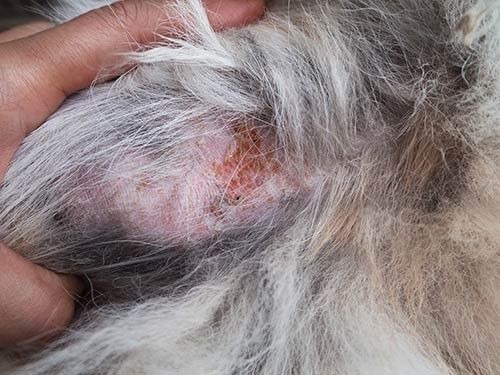
What to do when your dog loses hair because of allergies
When your dog is losing fur, this is a clear indication of an underlying issue. Many conditions other than allergies can cause fur loss. A vet visit is needed in order to make a diagnosis and start on the right treatment plan for your furry friend.
Typical signs to keep an eye on
Signs owners might see would include
- Pink or red skin
- Paw licking
- Face rubbing
- Scratching
- Thin fur or fur loss
- Thickening of the skin
- Hyperpigmentation of the skin
- A musty smell
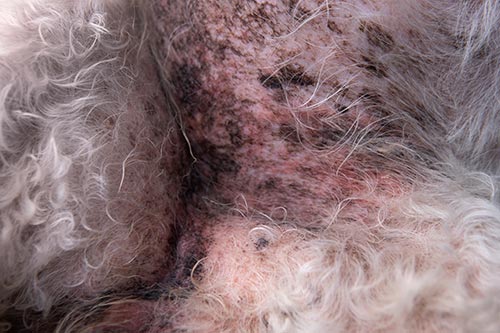
Frequently Asked Questions
• How long will it take to see improvement in my dog’s condition with treatment?
Once started on prescription anti-itch medicine (such as prednisone, Apoquel or Cytopoint) you should notice reduced itching within days. Skin infections can take a week or two to clear up, while fur will grow back in one to two months.
• What should I do if my dog’s allergies worsen or hair loss persists despite treatment?
If we are not seeing the improvement we want, a re-check with the vet is crucial. It could be that the initial diagnosis is wrong, or that we are not effectively removing the allergen from the dog’s environment. Another common issue would be fleas, or a fungal or bacterial infection, that have not been treated effectively.
• How can I determine if my dog has food allergies?
We’ll normally do a food trial, to see if a dog’s signs improve. The gold standard is to then reintroduce the suspected food(s) to see if signs come back.
• Are there any home remedies for dog allergies?
From home, the best thing we can do is to try and keep the dog’s home as allergen free as possible. This also means avoiding their allergen when out on walks. For a dog with a grass allergy, for example, this means avoiding grass when outdoors.
Products like skin supplements, medicated washes and hypoallergenic foods can also play a role in allergy management.
• Is hair loss always a sign of allergies in dogs?
No, hair loss is seen with other conditions including skin infections, mange and endocrine disorders like hypothyroidism and Cushing’s disease.
References
1. https://europepmc.org/article/med/19517416
3. Merchant SR, Taboada J. Food allergy and immunologic diseases of the gastrointestinal tract. Sem Vet Med Surg Small Anim 1991; 6(4):316-321.
Related posts:
Related posts:
- 1 [↩]
Disclaimer: This website's content is not a substitute for veterinary care. Always consult with your veterinarian for healthcare decisions. Read More.





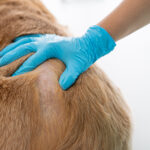
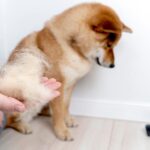
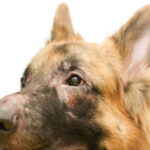
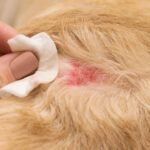
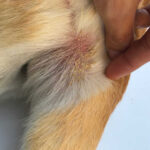
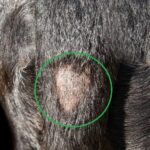



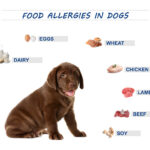
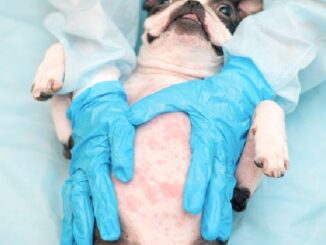

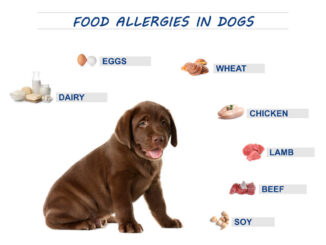
Be the first to comment